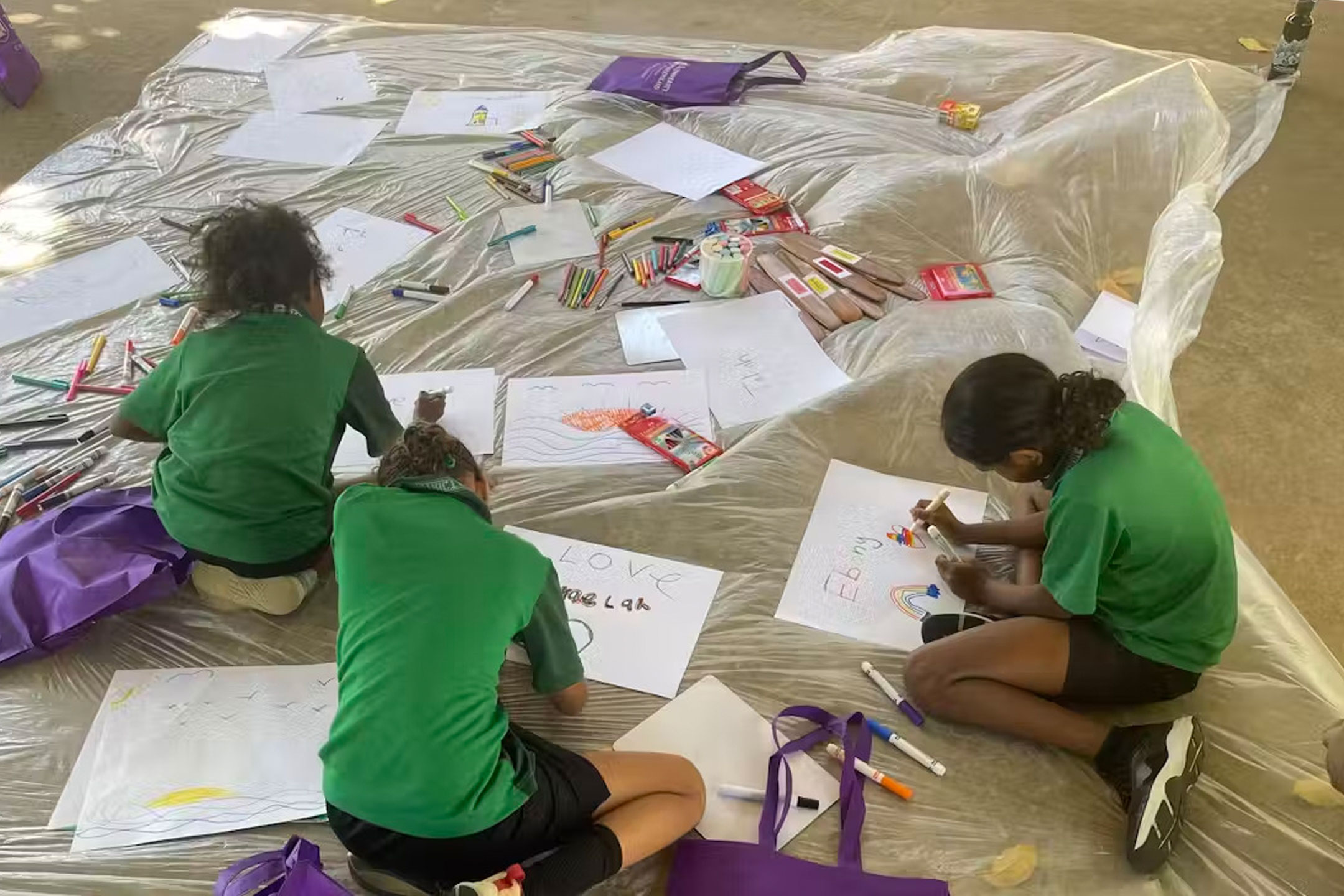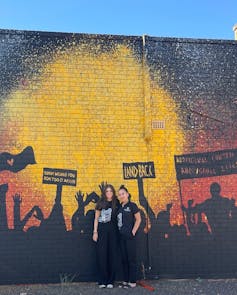
29 Aug What matters to First Nations children in Australia?
A new app is helping us find out, write Kate Anderson, Taleah Carson and Tasha Cole
Australian children are among the healthiest in the world. However, First Nations children continue to be left behind. To break the cycle of disadvantage, we need to foster First Nations children’s well-being so they can enjoy strong, happy childhoods.
Research can help us achieve this, but there’s a critical challenge – how do we include the voices of First Nations children in the research that aims to support them? We must do this safely and effectively.
One of the biggest hurdles is that participating in research can be boring, if not downright scary, for many children.
We’ve devised a unique approach to overcome this challenge: a culturally informed app that makes research for First Nations children fun and familiar.
Culturally relevant well-being measures are essential
Assessing and supporting the well-being of anybody must be done in a culturally relevant way. But when it comes to First Nations children, there has historically been a lack of well-being measures that take into account their unique cultural, spiritual, family, and community needs. This has been a major barrier to achieving real change in advancing the well-being of First Nations children.
Our national project, What Matters 2 Kids, is filling this gap. It combines art, storytelling, and technology to develop a nationally relevant, strengths-based well-being measure for First Nations children aged five to 11. This measure can then inform clinical and policy decision-making.

The project’s First Nations facilitators are engaging children around the country in art and yarning workshops to help them understand what is important for their well-being.
While these workshops use plenty of pencils, crayons, paint, and paper, our project team saw the need to give children other options for engaging with the study and sharing their views.

A new app
To achieve this, the project team turned to technology first developed by David Ireland from the Commonwealth Scientific and Industrial Research Organisation (CSIRO) to help children living with chronic pain communicate their pain to their therapists and how it affects their daily lives.
In collaboration, we developed a culturally grounded app that engages First Nations children in research about their own health and well-being in a fun and familiar way.
This app was designed to follow the format of the face-to-face art and yarning workshops. It invites the child to draw on a tablet and prompts them to describe what they have drawn and why it’s important to them.

Supplied
To make the app more welcoming, the research team used a real human voice instead of an artificially generated one. A talented young First Nations girl, Stevie Fagan, recorded the voiceover to make sure that the voice sounded friendly for the children using the app.
The icons in the app are designed with culturally grounded imagery created by Craig Carson, a proud Wakka Wakka man, artist and Senior Community Engagement Officer at the University of Queensland.
Combined, these features ensure the app is as inclusive and culturally respectful as possible. It gives children who might feel shy or uncomfortable sharing their stories face-to-face an opportunity to open up about what is important to their wellbeing on their own terms and with space and privacy.
In short, it gives children control over the research we are doing.
The project team is now using the app at various sites around Australia to collect data with children. The team aims to have a draft wellbeing measure ready for testing by the end of next year, and the project will run until December 2027.

Supplied
Lessons for other researchers
By weaving together First Nations culture with new technologies, the What Matters 2 Kids project is leading the way in developing and testing new ways of including the voices of First Nations people in research.
The new app has broad implications for research, policy, and program development. It demonstrates that including First Nations children’s voices in projects about them is not “too hard.”
Instead, it can engage and empower the next generation of First Nations leaders.![]()
Kate Anderson, Associate Professor, National Centre for Aboriginal and Torres Strait Islander Wellbeing Research, Australian National University; Taleah Carson, Project Officer for the What Matters 2 Kids study: National Centre for Aboriginal and Torres Strait Islander Wellbeing Research, Australian National University, and Tasha Cole, Project Officer for the What Matters 2 Kids study: National Centre for Aboriginal and Torres Strait Islander Wellbeing Research, Australian National University
This article is republished from The Conversation under a Creative Commons license. Read the original article.




